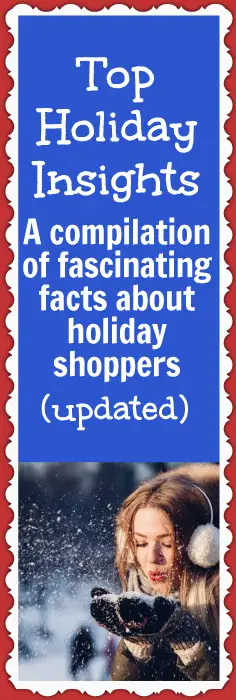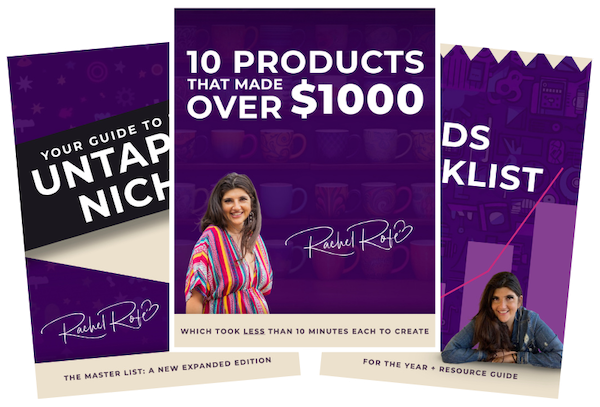To maximize your sales this holiday season, taking a closer look at the trends and stats from past holiday seasons is useful.
I created this type of post last year and I wanted to do the same thing again this year so you can better plan and strategize for the 2018 holiday shopping season.
In this post, I examine eight important insights from last year’s holiday season. Plus, I share key, email marketing suggestions along with must-know shipping deadlines and a little-known bonus holiday you can leverage.
So without further adieu, here’s what you need to know to make 2018 your best holiday season yet…
#1: Convenience and free shipping have a lot of power.
People love shopping from their homes. They love having their purchases delivered to their doorsteps. They love the 24/7 availability of online stores, and they love easy-to-compare prices.
One of the biggest hindrances to the convenience of online shopping, however, is having to pay for shipping.
According to Deloitte University Press, 47% of people said they will shop at brick-and-mortar stores just to avoid shipping costs.
But as long as free shipping is available, 72% of respondents said they anticipate shopping online instead of at physical stores. It all comes back to the convenience factor…

So whenever you can, offer free shipping.
And the way to do that is by building shipping costs into your prices. For example, if you’re doing the Low Hanging System, price mugs at $19.90 ($14.95 + $4.95 shipping). Then, offer free shipping. People will think they’re getting a deal and they’ll still get the convenience factor.
You might also wordsmith other convenience factors into your products’ descriptions. For example, you might highlight people’s preference for “home delivery” by saying “Have this one-of-a-kind mug delivered conveniently to your doorstep.”
Or, to save people even more time when they shop, you might highlight your selection of gift cards. (To learn more about selling gift cards with Etsy, eBay, and Shopify, click here.)
#2: Great prices entice new customers (and here’s how you can work with that).
Shoppers tend to stick with what they know. And so, 77% of people who shopped with you last year are likely to shop with you again this year.
This is a good thing.
But it isn’t to say that shoppers are set in their ways. Seventy-five percent of people said they’d be willing to try shopping at new stores, given the right incentive…the most enticing of which is better prices.

Now, for LHS purposes, I’ve said that pricing isn’t always a big deal. But if you are more price-conscious — and that absolutely makes sense in certain circumstances — here’s what you can do…
In the description of your top-performing products (don’t do this for everything you sell), you can compare your products to other more expensive items to establish an anchor.
For example, you might say “Other gifts go for $50 or $100+. But this mug costs less than $20. Plus, it has a super meaningful message that’s sure to tug on some heartstrings.”
#3: Discounts / sales have the most appeal.
Ninety-five percent of people said the offer they find most appealing is price discounts, followed by free shipping (75%) and free gifts (52%).

So consider running holiday promotions and be sure to highlight the big savings customers are getting.
You can set up a sale inside Amazon for your top-selling products. And you can do the same on Etsy by going here.
Also, keep in mind that the timing of when you run your special offers is important, because…
#4: Most people plan to start shopping before Thanksgiving.
Plus, early shoppers tend to spend more than people who start shopping later in the season.
According to Deloitte, 60% of people plan to begin shopping before Thanksgiving, spending an average of $1,685 (USD) compared to 40% of people who plan to wait until Thanksgiving or later and spend an average of $1,315 (USD).

Most people do plan to spread their shopping out, however (from late-November to mid-December). But, like last year, shopping traffic is expected to peak between November 16th and 30th, a trend known as “Black November.”
So if you’re going to run holiday promotions, keep this timeframe in mind. It’s your biggest window of opportunity.
And if you’re in LHS, get your designs up now because those favorites on Etsy are going to convert into sales.

#5: Cyber Monday was the biggest ecommerce spending day in 2017.
According to Statista.com, these were the top US ecommerce spending days during the 2017 holiday season:
- Cyber Monday
- Black Friday
- Thanksgiving
- Small Business Saturday
- Day before Thanksgiving
- Veteran’s Day

Consistent with 2016, 2015, and 2014, Cyber Monday continues to be the most lucrative holiday shopping day for most businesses.
For LHS, though, people typically see sales increase starting Black Friday and continuing all the way through Christmas.
#6: Holiday-themed email campaigns lower open rates but increase conversions.
If you don’t have an email list, don’t worry. LHS doesn’t focus much on email marketing. But if you do have a list, there are a number of ways you can leverage it during the holidays.
According to Yes Marketing’s Holiday Marketing Guide (download it here for free), in 2017, holiday-themed emails generally had lower open rates than “business as usual” (BAU) emails.
(Christmas-themed emails were the exception. The average open rate for BAU emails was 13.9%. For Christmas emails, it was 14.8%.)
But even though holiday-theme emails typically had lower engagement levels, they often produced higher conversion rates than BAU emails.
This was especially true for emails pertaining to Cyber Monday. The average conversion rate for BAU emails was 4.8%. But the conversion rate for Cyber Monday-themed emails was 8.9%.
Green Monday-themed emails also converted higher than BAU emails at 6.5%, as did Black Friday-themed emails at 6.4%.

The guide notes, however, that many of the holiday-themed emails with lower conversion rates had less persuasive calls-to-actions, the reason being these emails focused on sending well-wishes more than driving sales.
Below, let’s take a look at some of the key findings for the highest converting holiday-themed emails:
Black Friday 2017 emails
Email timing:
Open-rates were highest (17.4%) for emails sent the Monday before Black Friday. And conversion rates were highest (9%) for emails sent the Tuesday before Black Friday.
These emails typically promoted “pre-Black Friday” deals on limited quantities of items for a limited amount of time.
Offer type:
Black Friday emails with no mention of a special offer in the subject line had the highest open rate (15.1%) but the lowest conversion rate (4.2%). Emails that mentioned free shipping in the subject line had the highest conversion rate (14.7%).

Key suggestions based on the findings:
– Promote a “pre-Black Friday” sale.
– Create a sense of urgency through limited-time offers and scarcity tactics.
Cyber Monday 2017 emails
Email timing:
Conversion rates were highest (12.7%) for emails sent on Cyber Monday. And open-rates were highest (16.2%) for emails sent the Tuesday after Cyber Monday.
These emails typically promoted a one-day extension of the event, although conversion rates were at their lowest (2.7%) for these emails.
Offer type:
Cyber Monday emails with no offer in the subject line had the highest open rate (14.6%) but the lowest conversion rate (3.8%). Emails that promoted a certain percentage off in the subject line had the highest conversion rate (18.1%).

Key suggestions based on the findings:
– Highlight Cyber Monday’s limited timeframe (a one-day-only event).
– Don’t bother extending your Cyber Monday deals, as it can lead to over-exposure.
Green Monday 2017 emails
Email timing:
Open rates and conversion rates were both highest (12.5% and 7.1% respectively) for emails sent on the actual day.
Offer type:
Green Monday emails without a specific offer mentioned in the subject line had the highest open rates (13.3%) and conversion rates (5.9%).
This could be because the Green Monday offers typically weren’t as enticing or substantial as other events.

Key suggestions based on the findings:
– Shoppers are pressed for time at this point, so categorize your Green Monday promotions an make them specific (e.g. gifts under $15, gifts for dog lovers).
– Shoppers are also extra keen on finding deals at this point, so offer deep, limited-time-only discounts.
#7: 2018 Holiday shipping deadlines within the U.S. start December 10.
Learn when the rest of the 2018 holiday shipping deadlines are below:
USPS
Retail Ground – December 14
First Class Mail – December 20
Priority Mail – December 20
Priority Mail Express – December 22
FedEx
SmartPost Services – December 10
Ground – December 14
Home Delivery – December 17
Express Saver – December 19
2Day Services – December 20
Overnight Services – December 21
UPS
Ground – December 14
3 Day Select – December 18
2nd Day Air Services – December 20
Next Day Air Services – December 22

#8: Special consideration for the 2018 holiday shopping season: Single’s Day.
Celebrated on 11/11 (1 is the loneliest number, after all), Single’s Day started in China and was later picked up by Alibaba, which turned it into an online shopping trend.
In 2016, Alibaba reported generating $18 billion during its Single’s Day 24-hour event. To put that into perspective, Black Friday sales in the U.S. generated $2.74 billion in 2016, according to eMarketer Retail.
Single’s Day is geared toward young people, encouraging shoppers to “treat themselves.”
And while not many U.S. businesses currently participate, this leaves a window of opportunity for you to get ahead of the curve and engage more younger, college-aged shoppers.
I hope you find these holiday shopping insights to be useful and interesting! Leave a comment below and let me know what you think!





